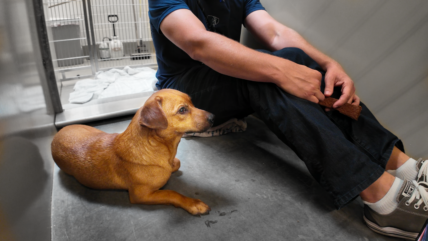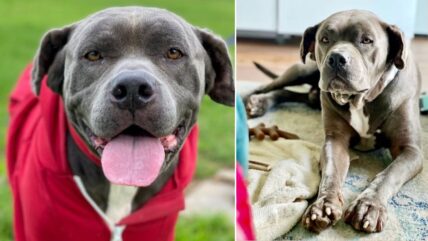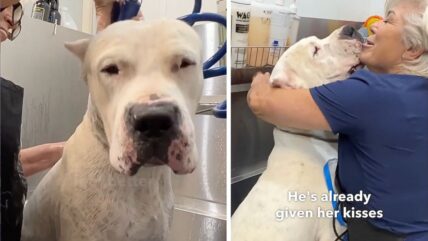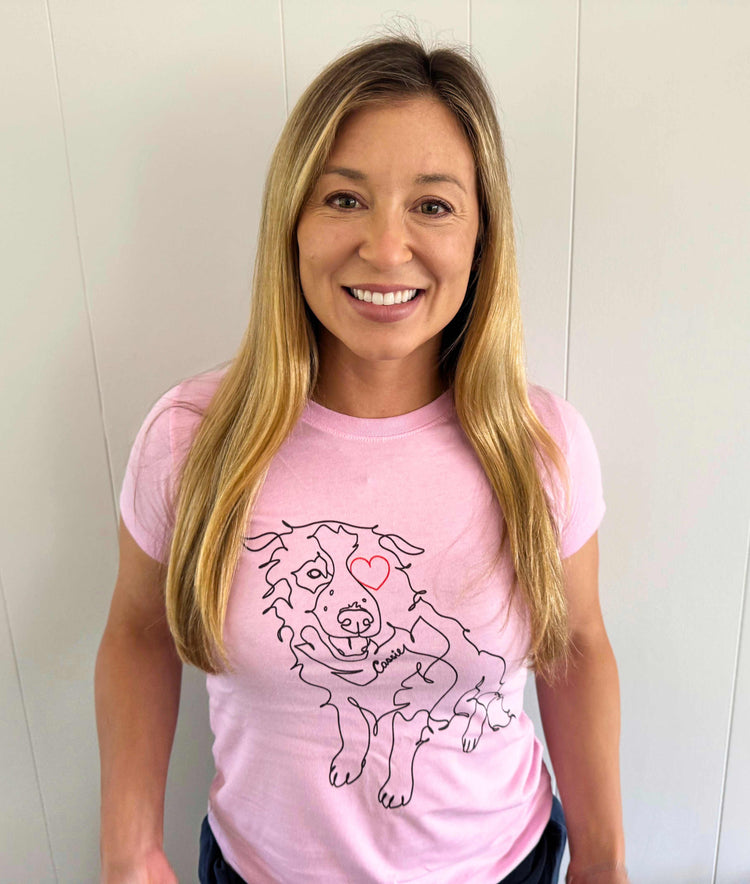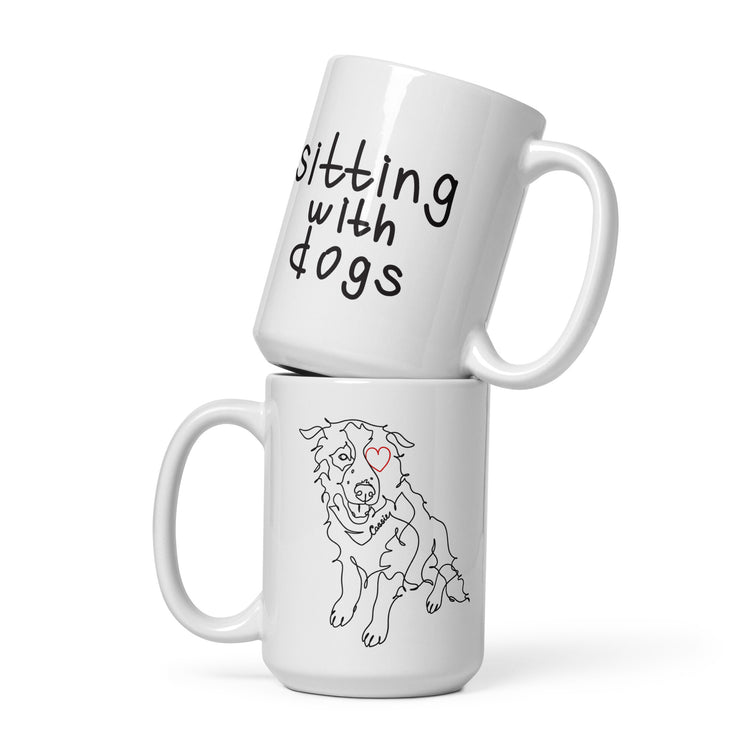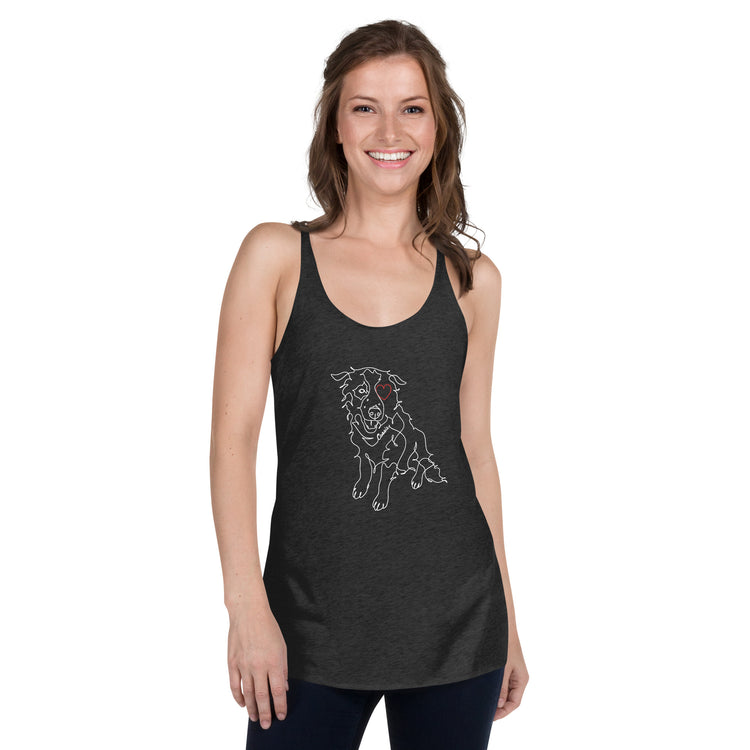This Giant Dog Made One HUGE Mistake with the Family Cat. What Happens Next is Heartbreaking
What do you see when you look at this dog? Look closely. Most people might just see a big dog lying there. But when I saw Moose, I saw a giant puppy in the throes of deep trauma, and I knew right away that I had to help him. His story hit me hard. Just days ago, Moose was a puppy named RIP, returned to the shelter after an unfortunate incident with a family cat. The incident labeled him as “dangerous” and “destructive.” But I saw past the labels. I saw a dog who didn’t deserve to be in this situation — a dog who needed guidance, love, and most importantly, a second chance.

When I entered his kennel for the first time, it was hard to miss the uncontrollable shaking. His fear was palpable — the kind of deep-seated fear that reaches your soul. It wasn’t just fear; it was trauma. Moose had lost all control over his body, and his mind was stuck in a state of panic. When I sat down beside him, I didn’t look at him directly. Eye contact at that moment could have felt too intense, too much for him to handle. I knew I needed to approach him on his terms, and that meant showing him that he was safe. We were going to go slow, one step at a time.
Moose’s Backstory
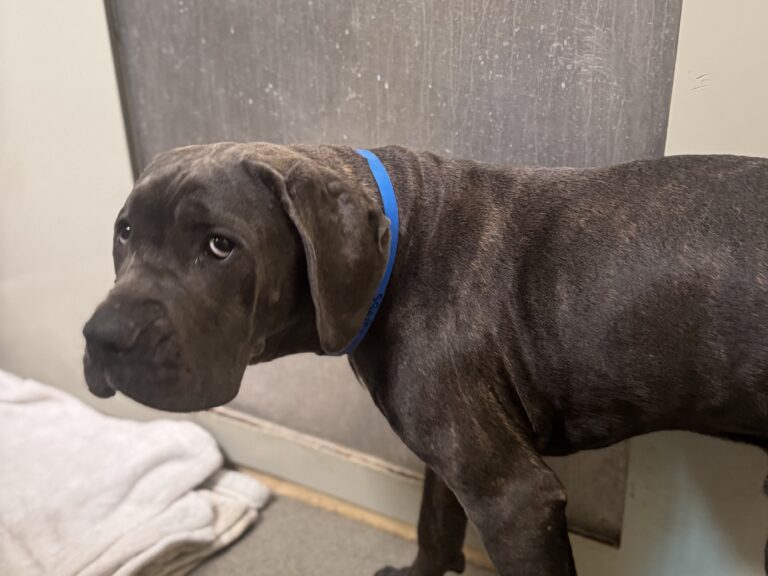
Moose’s story is both heartbreaking and all too familiar. Found as a stray in Riverside at a busy intersection when he was just a 6-month-old puppy, Moose’s life had already been filled with instability and fear. After being rescued and adopted, his story should have been one of hope. But his return to the shelter just three months later shattered that hope.
For a time, it seemed like things were going well. He lived in a home with kids and, despite being a big, energetic puppy, he was affectionate and playful. The family reported that Moose loved to romp around the yard, play with balls, and had a particular love for squeaky toys. But, like many young dogs, he also had a lot of energy and could be destructive when left unattended. Despite his sweet nature with people, there was a tragic incident with the family’s cat. Moose, still very much a puppy, didn’t understand his own strength or the danger his size posed to smaller animals. In an unfortunate moment of excitement, he chased the cat, leading to a fatal accident.
Heartbroken and unsure of how to manage Moose’s behavior around other animals, the family felt they had no choice but to return him to the shelter. They described him as a sweet dog but one who was too risky to keep in a home with small pets. Now, at 10 months old, Moose found himself back in the shelter, confused and traumatized, struggling to understand why his world had fallen apart.
The result is that he wasn’t just afraid of men, loud noises, or leashes. Moose was terrified of the world. The shelter environment exacerbated his trauma. I often talk about the fight or flight response, but there’s another response that many overlook — freeze. And that’s exactly what Moose was doing. He was frozen in place, his body trembling uncontrollably.
A New Name For Moose
One of the first things I did was change his name. RIP didn’t sit right with me. It felt too heavy, too connected to his past. He needed a fresh start, a name that would signify strength but also kindness. So, I renamed him Moose.
Moose is a fitting name for a dog of his size — after all, he’s going to grow into a big, strong boy. But the name also carries a sense of warmth. I wanted something that reflected his potential to be a gentle giant, despite everything he’d been through.
Moose’s reaction to his new name was subtle but promising. He didn’t know it yet, but this name was part of his fresh start, part of a new chapter in his life. I knew we had a long road ahead of us, but I was determined to help Moose learn to trust again.
Why Eye Contact Matters

One of the first things I learned about Moose was that direct eye contact made him uncomfortable. It’s something I’ve noticed in many dogs who have experienced trauma. For them, eye contact can feel like a challenge, a confrontation, or even a threat. So instead of looking directly at him, I made sure to avert my gaze while sitting quietly by his side.
As we sat together, I noticed subtle changes in his body language. His trembling started to lessen, and he began to sneak glances at me. It was progress, even if it was small. When he glanced at me without me looking at him, I knew we were heading in the right direction.
Positive reinforcement was going to be key in Moose’s journey. He needed to know that good things happen when he feels safe. So, I pulled out some treats — small victories in the form of rewards to help retrain his brain. At first, he was suspicious of the treats I offered. But slowly, he started to warm up to the idea. Each time he accepted a treat, we took another small step forward in building his trust.
Understanding Trauma and Fear Responses

When working with dogs like Moose, it’s essential to understand the effects of trauma on their behavior. Moose wasn’t just a hyperactive puppy; he was a dog who had likely been through more than we could imagine. The fear of leashes, men, loud noises, and even vacuums all pointed to some past trauma.
The shaking, the freezing, and the side-eye glances were all signs that his brain was stuck in a loop of fear. The reward part of his brain wasn’t activating because he was too scared to move beyond his trauma. But with positive reinforcement, I could help him activate that part of his brain again. Treats, toys, and gentle words would all play a role in Moose’s recovery.
I’ve seen it time and time again: once a dog starts to feel safe, the healing begins. And Moose was no different. The first time he took a treat from my hand was a huge victory. It meant that he was beginning to associate me with something positive. Slowly but surely, we were making progress.
Toys, Treats, and the Power of Play
Moose loves toys, especially balls and squeaky toys. It was one of the few pieces of information we had from his time with his previous family. So, I made sure to bring out some toys during our time together. His eyes lit up when he saw the toys, and for a moment, I saw the puppy inside of him.
Play is an incredibly powerful tool when working with dogs recovering from trauma. It helps activate the reward part of their brain and gives them an outlet for their energy. Moose’s favorite toy quickly became a stuffed owl with a tennis ball inside. Watching him play with it was like watching a weight lift off his shoulders. For a few minutes, he was just a puppy again — carefree and happy.
Positive affirmations were another essential part of our time together. I would talk to Moose in a soothing voice, telling him he was a good boy, reassuring him that he was safe. I could see the impact of these words in his eyes. They softened, and his body relaxed just a little bit more each time.
Scooping Up A Giant Dog

One of the most powerful tools I use with dogs like Moose is what I call ‘the scoop.’ It’s exactly what it sounds like — I carefully scoop the dog into my lap, holding them close. With Moose, I could tell he had never really experienced that kind of deep, physical comfort. The idea behind the scoop is to provide a sense of security, to let the dog know they are safe, protected, and that nothing can hurt them while they’re in your arms.
For a dog like Moose, who has been through trauma, this simple act can be incredibly calming. It’s like recreating that feeling of being a small puppy, cradled by their mother, only now they’re held by someone who wants to guide them toward healing. It’s not just about affection — it’s about creating a moment where they can finally let their guard down, even if only for a minute. When I scooped Moose into my lap, his body, though heavy and tense at first, slowly began to relax. For the first time, he felt like he could breathe, and that small moment of trust marked a significant step in his recovery.
Leash Training: A Step Forward
One of the biggest challenges for Moose was leash training. He had likely had some bad experiences with leashes in the past, which made him fearful of even the sight of one. But I knew that getting him comfortable with a leash was crucial to his progress.
We started slow, keeping the leash loose and giving Moose plenty of space to move if he needed to. At first, he was hesitant, but after a few attempts, he began to trust the leash more. We took small steps — quite literally — but each step was a victory. Eventually, we even managed to go for a short walk, something that would have seemed impossible just days earlier.
Moose’s Future: What He Needs

Moose’s journey isn’t over yet. He’s still a young dog with a lot of energy and a lot of love to give. But he needs the right home — a family that understands his needs and is willing to put in the time and effort to help him continue to heal.
He’s not a dog for everyone. His size alone means that he’ll need space to run and play, and his past trauma means that he’ll need a patient and understanding owner. But I’m confident that the right family is out there for Moose. Someone who will see past his fear and see the sweet, loving dog that I see.

